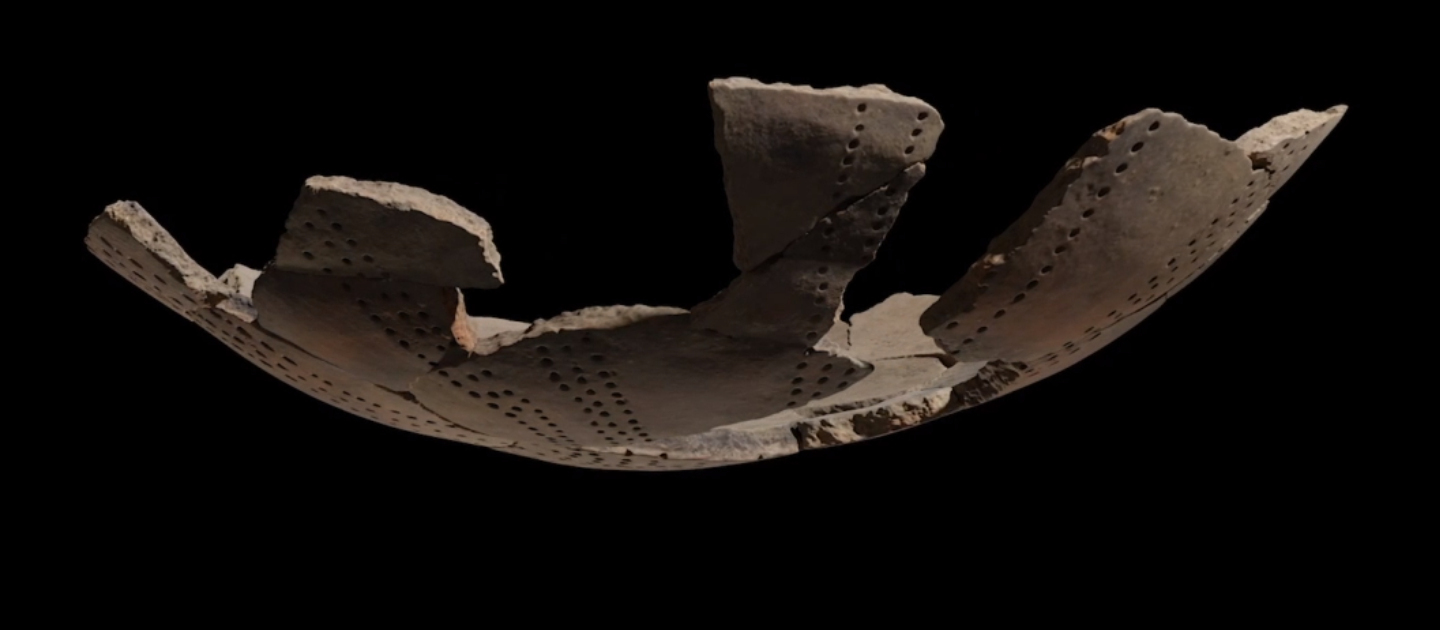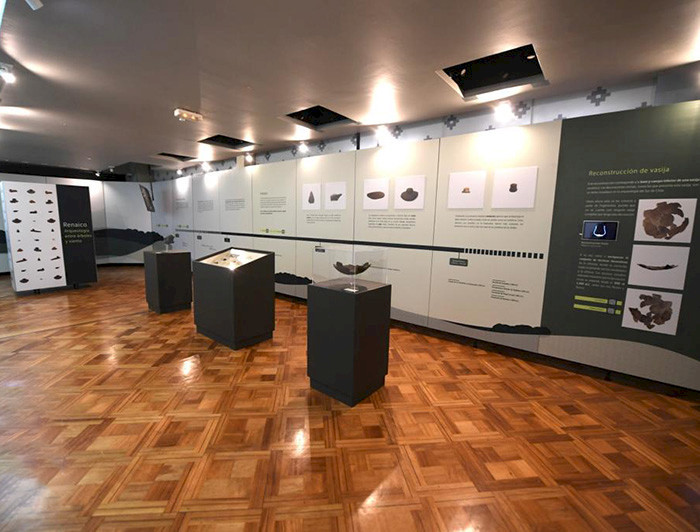
UC Chile Team Discovers Priceless Archeological Artifacts From Pre-Mapuche Cultures
The discovery of the pieces was led by a team from the UC Chile School of Anthropology. Their study will provide a deeper understanding of the domestic life of pre-Mapuche communities that lived in south-central Chile nearly a thousand years ago.

photo_camera The main findings at Renaico were incised and obsidian ceramics, possibly belonging to ancient Mapuche people between 1,000 and 1,500 AD. (Photo credit: Renaico Project)
“Renaico: Arqueología entre árboles y viento” [Renaico: Archaeology Among Trees and Wind] is the name of the exhibit at the Araucanía Regional Museum, located in the heart of the Mapuche area in southern Chile.
The exhibit includes the important archaeological findings made at the “Enel Wind Park” in that area.
The discoveries were made by a team led by UC Chile School of Anthropology faculty member Roberto Campbell during a consultancy that began in 2018.
The most significant findings are ceramic pieces with a particular small circular incised decoration that were found to be from the same vessel. This is something unprecedented within the archaeological discoveries of the area and helped to reconstruct part of the vessel.
Although there are still very few archaeological studies on the ceramics of this area, it is presumed that they belong to pre-Mapuche cultures that lived in the area between 800 and 1,300 AD. Ceramics in this period were functional and part of people's daily lives.
Until now, only small single fragments of similar ceramics had been found. Finding so many pieces together is a remarkable discovery as it made it possible to reconstruct part of the vessel.
Origins of the Project
Enel began excavations in 2011 as part of the environmental assessment process for the wind park the company was planning to build in Renaico. The project began when archaeological remains were found on the land where the park would be installed. After this, the sites were surveyed, and finally the remains were recovered.
“There was extremely interesting and novel archaeological material for what we knew in the northern area of Araucanía. For example, we found ceramics with an incised decoration. We knew that similar archaeological findings had previously been reported in the area, but never as many and as diverse as those found in the wind park,” said archaeologist Roberto Campbell.
The School of Anthropology was contacted by Enel in 2017 in order to assess the value of the pieces found during the first excavation process carried out between 2011 and 2016.
One of the advantages of this analysis is that the material was collected during a controlled process in a recent excavation.
Apart from the ceramic remains, two tembetás (body jewelry worn under the lower lip) were found.
Both are the first two findings reported in Araucanía. Before this discovery, similar findings had only been reported further north, around the Maule River.
In addition, obsidian—a type of volcanic glass—was found in great quantity for an area that is 150 km from the nearest volcano.
Towards the end of 2018, the UC School of Anthropology was officially invited to join the project.
“We started excavations in December 2020 and ended in June 2022, and we conducted five campaigns with a team of between ten and twenty people. We dug about 150 wells, which allowed us to complement and add to the information we already had. We were able to investigate this area better. We had a limited image of the site—100 by 100 meters—and from these excavations we were able to expand it even more, to cover a perimeter of one kilometer," explained Campbell.
This research made it possible to recognize older areas (that were inhabited earlier) and more recent ones. Thus, it was concluded that this is an area that it was not evenly inhabited, although it was systematically used from at least 600 AD.
The findings preliminarily suggested that the place was much more densely populated than previously thought, and that it was probably a place where people from different areas gathered. The fact that obsidian was found so far from its source could indicate that there was an exchange network in place.
The Importance of a Vessel
"During the last excavation campaign carried out in June 2022, we found several fragments of a vessel in a very narrow area, so we were able to reconstruct the base of the piece, which also had incised decoration. We knew that this type of decoration existed, but to this day no museum has a complete piece. For the first time, we will have an image of how the decorations might have been arranged on these pieces,” said Roberto Campbell.
This finding is particularly relevant to the history of archeology in the Araucanía area. If you study the work currently being done by potters in the area, it is based on memory and the knowledge generated by archaeologists. Thus, only molded and painted ceramics are being made. Thanks to this research in Renaico, incised decoration and art (made with small sunken dots on clay) could be introduced into the work of these artists.
“Until the 1990s, archaeology in Araucanía focused on the contexts of cemeteries and entire vessels. In this sense, there is a side of the everyday lives of ancient people that were not considered: their domestic world. These excavations allow us to access the spaces where people lived for a long time. Now we are thinking about what these societies were like from a domestic point of view,” concluded the professor.


